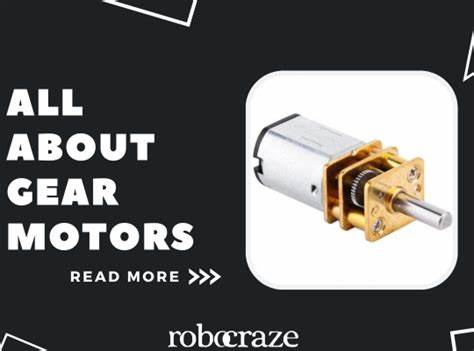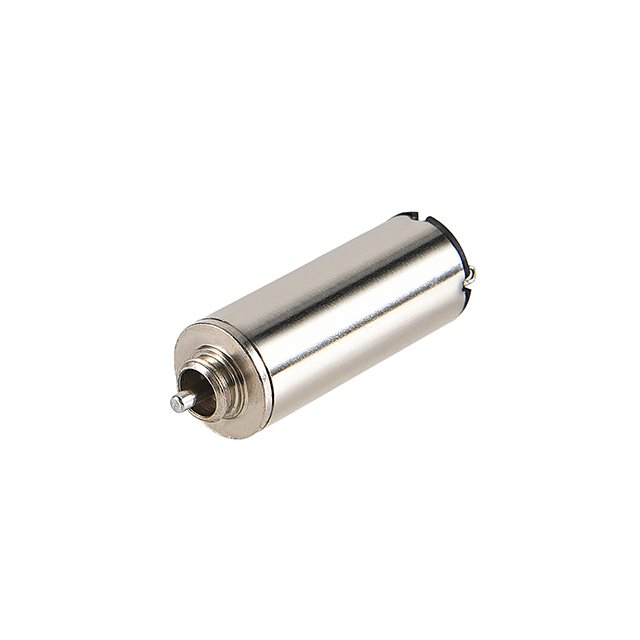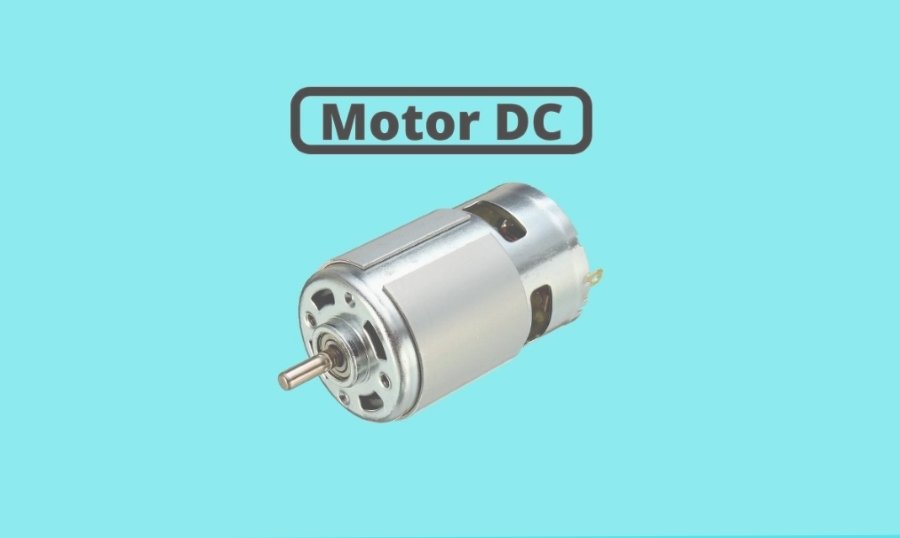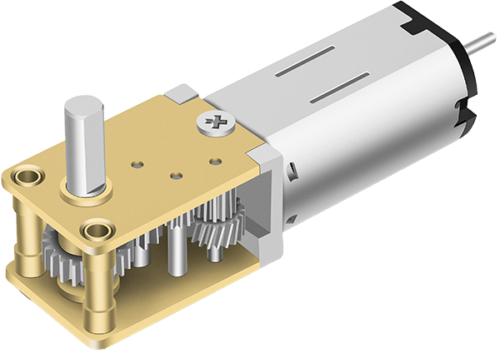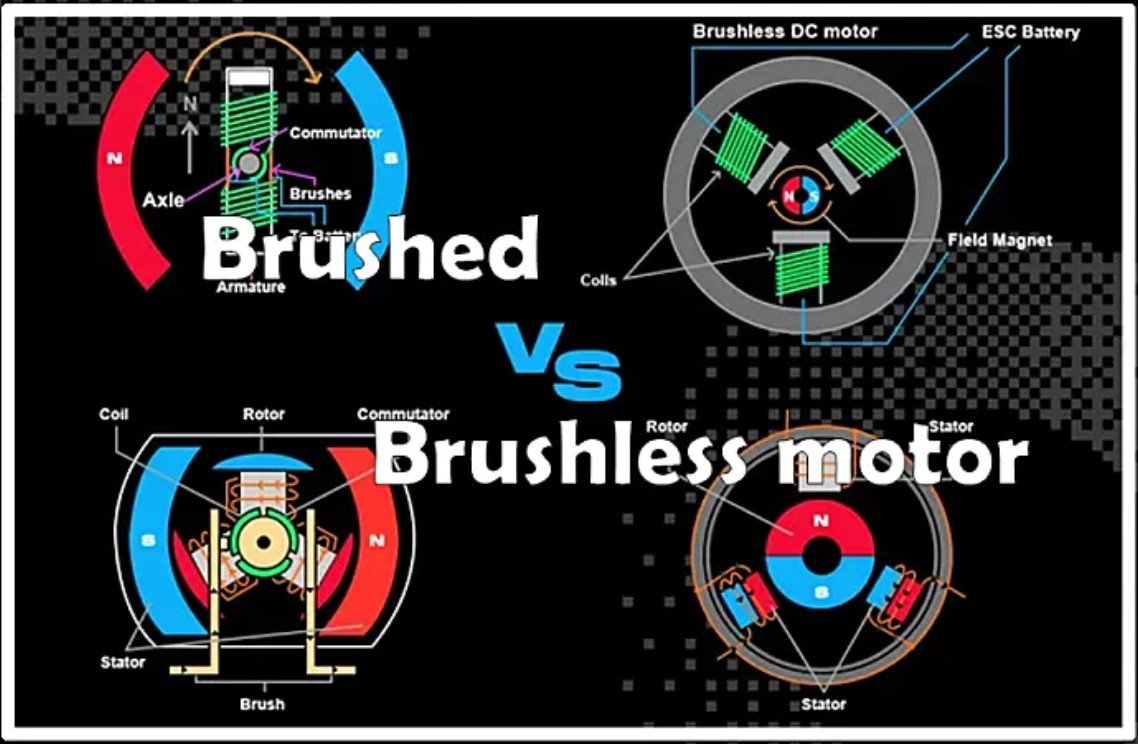Gear motor technology joins a motor with gears to control movement. It also gives strong force in a smart way. This setup has many advantages for machines. For example:
Small designs fit into tight spaces.
Exact speed control keeps things running smoothly.
Strong force boosts machine power.
Built-in gear systems make machines work better.
This technology is very useful today. It provides steady and efficient power. From robots to factory machines, gear motors help machines work well and use less energy.
Key Takeaways
Gear motors mix motors and gears to move things better. They make machines stronger and smaller.
Picking the right gear motor depends on torque, speed, and power. This is important for machines to work well.
Gear motors save energy by wasting less power. This lowers costs and helps the environment.
There are different gear motors, like helical and planetary. Each type works best for certain jobs in industries.
Taking care of gear motors and choosing good gear ratios helps them last longer and work better.
What is Gear Motor Technology?
Definition and Core Concept
Gear motor technology mixes an electric motor with gears. This creates a small and efficient unit. It helps control movement and torque accurately. Changing the gear ratio adjusts speed and force to fit different tasks.
This idea improves how machines work by giving controlled power. Gear motors handle different loads while staying efficient. For example, the HSBW Series Gearmotors show how better designs increase reliability. These units carry heavy loads, making them great for factories.
Picking the right gear motor is important for good results. Things like power needs and torque output matter for performance. Gear motors can handle power from 0.12 to 160 KW. Their gear ratios range from 1.39 to 27,001, fitting many uses.
Key Features of Gear Motor Technology
Gear motor technology has features that make it very useful:
Torque Multiplication: Gear motors increase torque, helping machines lift heavy loads easily.
Versatility: Many gear ratios let you adjust performance for different jobs, like robots or factory machines.
Compact Design: Combining the motor and gears makes it smaller to fit tight spaces.
Energy Efficiency: Gear motors save energy while still working well.
Durability: They are strong and last long, needing less fixing.
Gear ratios and torque are very important. They let you adjust machines to work better and save energy. Whether it’s for conveyor belts or green energy systems, gear motors give the power and flexibility needed.
How Do Gear Motors Work?
Parts of a Gear Motor
A gear motor has important parts that work together. Each part helps it run smoothly. Here are the main parts:
Part | What It Does |
|---|---|
Electric Motor | Changes electrical energy into mechanical energy. |
Gearbox | Adjusts speed and torque for the output shaft. |
Output Shaft | Sends mechanical power to the machine. |
Includes Right Angle, Planetary, and Helical for different uses. | |
Mechanics | Uses magnetic forces and gear systems to work. |
The electric motor makes mechanical energy. The gearbox changes speed and torque to fit the job. It slows down the motor’s speed but increases its torque. This design keeps the motor small and efficient.
Gear motors work within certain limits. They usually use 6V to 24V DC power. Their gear ratios range from 20:1 to 100:1. These features make them useful for many tasks.
How It Works
A gear motor works step by step:
The motor turns electrical energy into motion using magnets.
The gearbox slows the motor’s speed but boosts its torque.
The output shaft moves power to the connected machine.
The gear system helps the motor give strong torque with less energy.
This process balances speed and torque. Lower speed means higher torque, which is great for heavy jobs. Picking the right gear and ratio is key for good performance.
For example, DC gear motors combine a motor and gearbox for precise movement. They are used in robots, conveyor belts, and other machines needing controlled speed and torque.
Tip: Pick a gear motor based on your needs like torque, speed, and power.
Types of Gear Motors
Helical Gear Motors
Helical gear motors are very efficient and work quietly. Their gears have slanted teeth that connect smoothly as they turn. This design lowers noise and shaking, making them great for quiet jobs. You can find these motors in elevators, mixers, and conveyor systems.
One big benefit is their ability to handle heavy loads. The slanted teeth spread force evenly, making them strong and long-lasting. They also save energy because they work more efficiently than other motors.
Tip: Choose helical gear motors for quiet and energy-saving tasks.
Bevel Gear Motors
Bevel gear motors use cone-shaped gears to change motion direction. They usually work at a 90-degree angle between shafts. This makes them perfect for tight spaces or when motion needs to turn. You’ll see these motors in power tools, printing presses, and cars.
These motors are flexible and handle both high speed and high torque. Their small size fits tight areas without losing power. But they can be noisier than helical gear motors, so keep that in mind.
Planetary Gear Motors
Planetary gear motors are small but very strong. They have a center “sun” gear surrounded by “planet” gears inside a ring. This setup gives high torque in a compact design. They are popular in robots, machines, and electric cars.
A key feature is their high gear ratio, which controls speed and torque well. They work best near their top efficiency and are great for precise tasks. For example, they are ideal for robotic arms or moving conveyor belts.
Specification | DC Gear Motors | Stepper Motors |
|---|---|---|
Speed | Slower speeds with more torque | Slower speeds with exact control |
Torque | High torque at low speeds, good for robots | Great for accurate movements |
Efficiency | Best when used near peak performance | Efficiency is often lower than DC motors |
Gear Ratios | Adjusts speed and torque | Affects output torque and speed |
When picking a gear motor, think about torque, speed, and efficiency. Each type has special features for different jobs. Knowing what you need helps you choose the right one.
Worm Gear Motors
Worm gear motors use a screw-like gear and a wheel to move. This setup gives a high gear reduction, perfect for slow speeds and strong torque. These motors are often found in elevators, conveyors, and heavy machines.
Key Features of Worm Gear Motors
Self-locking Mechanism: The gear stops the motor from going backward, adding safety.
Compact Design: Its simple shape fits into small spaces easily.
Smooth Operation: The sliding motion lowers noise and reduces shaking.
Note: Worm gear motors are great for jobs needing slow, strong, and controlled movement.
Applications
These motors are ideal for tasks needing steady motion. They are used in gates, lifts, and packaging machines. Their strength makes them dependable for industrial work.
Efficiency Considerations
Worm gear motors lose some energy because of friction. But their strength and safety features often make up for this.
Spur Gear Motors
Spur gear motors use straight gears to transfer power. These gears connect directly, making the design simple and efficient. You’ll find these motors in clocks, washers, and conveyor belts.
Key Features of Spur Gear Motors
High Efficiency: Direct gear contact saves energy.
Simple Design: Easy-to-understand layout makes fixing simple.
Cost-Effective: These motors are cheap and easy to find.
Tip: Use spur gear motors for fast jobs needing medium torque.
Applications
These motors work well for light tasks. They are common in home appliances and small machines. Their simple design makes them a favorite for everyday use.
Limitations
Spur gear motors can be loud because of direct gear contact. They also handle less torque, so they’re not good for heavy jobs.
Advantages of Geared Motors
Torque Multiplication
Geared motors are great at increasing torque. They combine a motor with gears to give strong force at slower speeds. This is helpful for lifting heavy things or powering big machines. The gears slow the motor but make its force stronger.
For example, conveyor systems use geared motors to move heavy items easily. This makes them a good choice for jobs needing power and accuracy.
Advantage | Description |
|---|---|
Torque Multiplication | Geared motors give more torque, useful for heavy tasks. |
Speed Reduction | They slow speed but boost torque, improving performance. |
Cost Effectiveness | They are affordable, easy to fix, and save money. |
Space Efficiency | Small size fits tight spaces while still giving strong force. |
Energy Efficiency
Geared motors save energy while working well. The gears help the motor run at its best speed, wasting less energy. This lowers costs and helps the environment.
For example, wind turbines use geared motors to balance speed and torque. This keeps them working efficiently even when loads change.
Tip: Pick the right gear ratio to save energy and protect the motor.
Space-Saving Design
Geared motors are small but powerful. They combine the motor and gears into one unit, saving space. This makes them perfect for robots, medical tools, and small machines.
Even though they are compact, they still give the needed force and speed control. Their small size and strong performance make them popular for modern machines.
Note: For tight spaces, choose a geared motor with high torque for its size.
Enhanced Durability and Reliability
Using a geared motor means it will last a long time. These motors are made to handle tough jobs without losing strength. They stay efficient because of strong materials and careful design. This helps them resist damage over time.
Geared motors last longer by spreading stress evenly on their parts. For instance, the gears are lined up to lower friction and avoid harm. This setup reduces breakdowns, even during heavy or nonstop use.
Another benefit is their reliability. Geared motors work steadily, whether moving a conveyor belt or a robotic arm. The built-in gearbox keeps motion smooth and controlled. This lowers the chance of sudden problems, making them great for industries where downtime is expensive.
Fixing geared motors is simple too. Many have designs that make repairs easy, like parts you can reach quickly. You can replace worn pieces without fixing the whole motor. This saves time and money while keeping machines working well.
Tip: Follow the maker’s care tips and don’t overload the motor to make it last longer.
How Gear Motor Technology Transforms Mechanical Systems
Improving Efficiency and Performance
Gear motor technology helps machines work better and save energy. It combines a motor and gearbox into one unit. This design reduces wasted energy and improves how machines perform. Even with changing loads, gear motors keep machines running smoothly.
One way they save energy is by cutting power losses. For example, special gear oils reduce power loss by making gears super slippery. This allows for using less oil, which lowers energy waste even more. Advanced setups, like low-loss gears with water-based polyglycol, also boost efficiency.
Findings | Description |
|---|---|
Synthetic gear oils | Reduce power loss by making gears super slippery. |
Low load-dependent losses | Use less oil, cutting energy waste further. |
Technological setups | Water-based polyglycol gears improve efficiency. |
Superefficiency criteria | EEI < 27.9% and η > 99.5% for FZG gearbox; EEI < 44.3% and η > 99.6% for industrial gearbox. |
Efficiency dependence | Efficiency changes based on gearbox type and how it’s used. |
These improvements make gear motors great for saving energy and cutting costs. Whether in conveyor belts or wind turbines, they ensure machines use less power while working well.
Tip: Pick a gear motor with the right gear ratio to save energy.
Enhancing Reliability and Longevity
Gear motors are built to last and handle tough jobs. Their strong design and careful engineering make them reliable. By combining a motor and gearbox, they reduce wear and keep working smoothly over time.
Industries like steel, power, and paper have seen big benefits from gear motors. For example, HSBW Series gear motors give strong torque at low speeds. This saves energy and lowers costs. In chemical plants, G Series gear motors help with greener operations and less maintenance.
Industry | Gear Motor Type | Improvements Demonstrated |
|---|---|---|
Steel | HSBW Series | Strong torque, lower energy use. |
Power and Port | HSBW Series | Cuts costs, reduces greenhouse gases. |
Chemical | G Series | Greener operations, less maintenance needed. |
Paper | G Series | Environmental benefits, lower repair costs. |
Gear motors can handle heavy work without breaking often. They last longer and need fewer repairs, saving time and money.
Note: Regular care, like oiling and checking loads, helps gear motors last longer.
Driving Innovation in Various Industries
Gear motors are key to new ideas in many industries. They are flexible and can be used in different ways. From robots to green energy, gear motors help by giving precise control and strong torque in small designs.
In robotics, they power robotic arms for smooth and accurate moves. In cars, they help electric vehicles by improving torque use. Wind turbines use gear motors to balance speed and torque, making more energy.
Factories also benefit from gear motors. Conveyor belts use them to move heavy items easily. Their small size saves space but still gives the power needed for hard jobs.
Did You Know? Gear motors are important for self-driving cars and smart factories.
Choosing the right gear motor can open up new possibilities. Gear motors not only improve current systems but also help create exciting new technologies.
Real-World Applications of Gear Motors
Robotics and Automation
Gear motors are important in robots and automation. They give accurate control and strong torque, which robots need to move. You can find them in robotic arms, mobile robots, and factory conveyor systems. Their small size helps them fit in tight spots while working well.
For example, tests show gear motors help robots move pallets smoothly. These robots use gear motors for precise and steady movements. In factories, gear motors improve efficiency and save energy, making them a popular choice.
Tip: Pick gear motors with the right torque and speed for your robot.
Automotive Industry
Gear motors make electric cars and other systems work better. They control torque for smooth driving and save energy. You’ll also see them in power windows, seats, and wipers.
In electric cars, gear motors improve energy use and battery life. They handle different loads, making them great for car systems. For example, Krampe Fahrzeugbau GmbH uses gear motors to manage material flow in vehicle production.
Company Name | Case Study Description | Link |
|---|---|---|
Krampe Fahrzeugbau GmbH | Quality on wheels from Münsterland | |
Schmitz Cargobull AG | Perfect interaction for handling complex components |
Note: Gear motors help modern cars save energy and work better.
Renewable Energy Systems
Gear motors are very useful in renewable energy. They are used in wind turbines to control speed and torque, helping make more energy. They are also great for solar panels, adjusting them to get the most sunlight.
In wind turbines, gear motors match the rotor’s speed to the generator’s needs. This keeps energy production steady, even when the wind changes. Companies like Schluchseewerk AG use gear motors to move dam beams, showing their reliability in energy systems.
Company Name | Case Study Description | Link |
|---|---|---|
Schluchseewerk AG | Demag DH hoist unit positions dam beams | |
Trex Perú | Demag Cranes for the La Joya mining region |
Did You Know? Gear motors in renewable energy help cut greenhouse gases by being efficient.
Industrial Machinery
Gear motors are important for running industrial machines. They give power and control to heavy equipment. You can find them in presses, mixers, and cranes. These motors combine a motor and gearbox into one small unit. This makes them great for places with little space.
A big advantage of gear motors is their ability to handle high torque. This makes them perfect for lifting, pressing, or moving heavy items. For example, in steel plants, gear motors help shape metal sheets in rolling mills. They keep speeds steady, even during tough jobs.
Another benefit is their strength. Gear motors can handle tough conditions like heat and nonstop use. They last long and need less fixing, saving time and money. This is very helpful in industries where every second matters.
Tip: Pick a gear motor that matches your machine’s torque and speed needs.
Conveyor Systems
Conveyor systems depend on gear motors to work well. These systems move items in factories, warehouses, and shipping centers. Gear motors give the power needed to keep belts moving, even with heavy loads.
Their small size makes gear motors easy to fit into conveyor setups. They also allow for exact speed control, keeping materials moving steadily. For example, in packaging, gear motors help products move at the right speed for sorting or labeling.
Gear motors also save energy in conveyor systems. They make motors work better, cutting down on energy use and costs. This helps businesses save money and be more eco-friendly.
Did You Know? Gear motors are key to modern conveyor systems, making them faster and more efficient.
Gear motor technology changes how machines work by making them more efficient, strong, and reliable. It is used in many fields, like robotics and green energy, where it helps create new ideas and saves power.
Future Trends:
Automation is growing fast, increasing the need for gear motors.
Permanent magnet gear motors give better control and use less energy.
Even with tough economic times, the market is expected to grow. By 2033, it could reach $52.46 billion, with a CAGR of 7.79%. This shows a bright future for gear motor improvements.
Tip: Keep learning about new trends to use gear motor technology wisely.
FAQ
What does a gear motor do?
A gear motor joins a motor and gears to control speed and torque. It helps machines work better, especially for strong or precise tasks.
Which industries use gear motors the most?
Industries like robotics, cars, green energy, and factories use gear motors a lot. These motors make machines more efficient, save energy, and improve performance.
What should you think about when picking a gear motor?
Look at torque, speed, power needs, and the job’s requirements. Choosing the right gear ratio helps machines work well and save energy.
Why are gear motors good for saving energy?
Gear motors save energy by balancing speed and torque. Special designs, like low-loss gears and synthetic oils, make them even more efficient and eco-friendly.
What are the main types of gear motors?
The main types are helical, bevel, planetary, worm, and spur gear motors. Each type is made for specific jobs based on torque, speed, and design.
Tip: Always choose the right gear motor for your task to get the best results.
